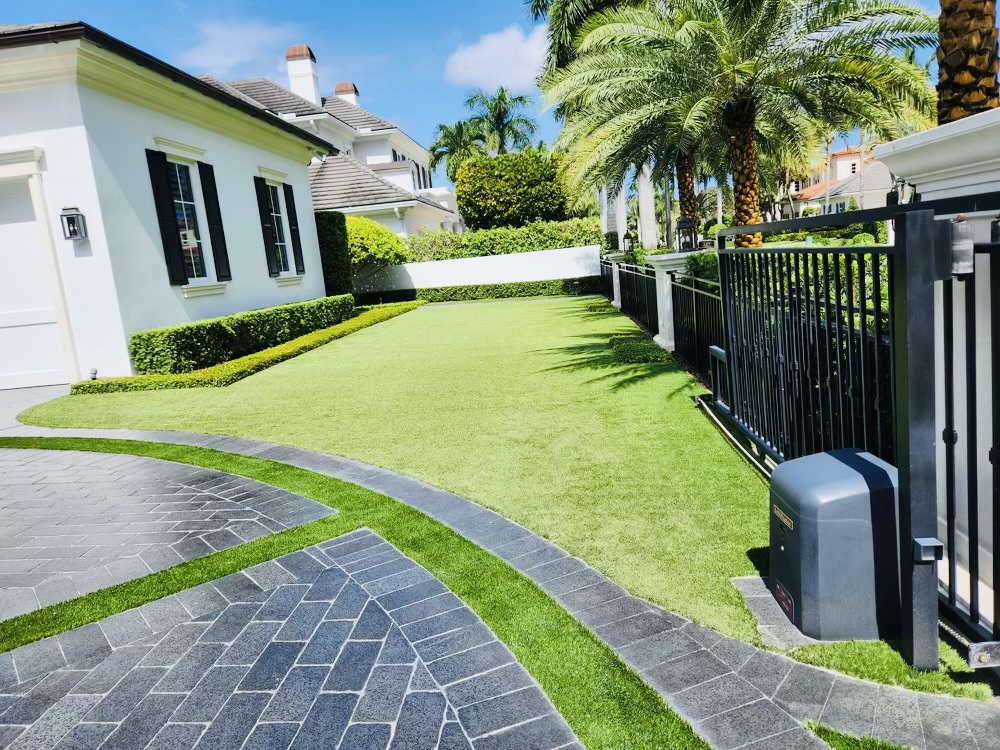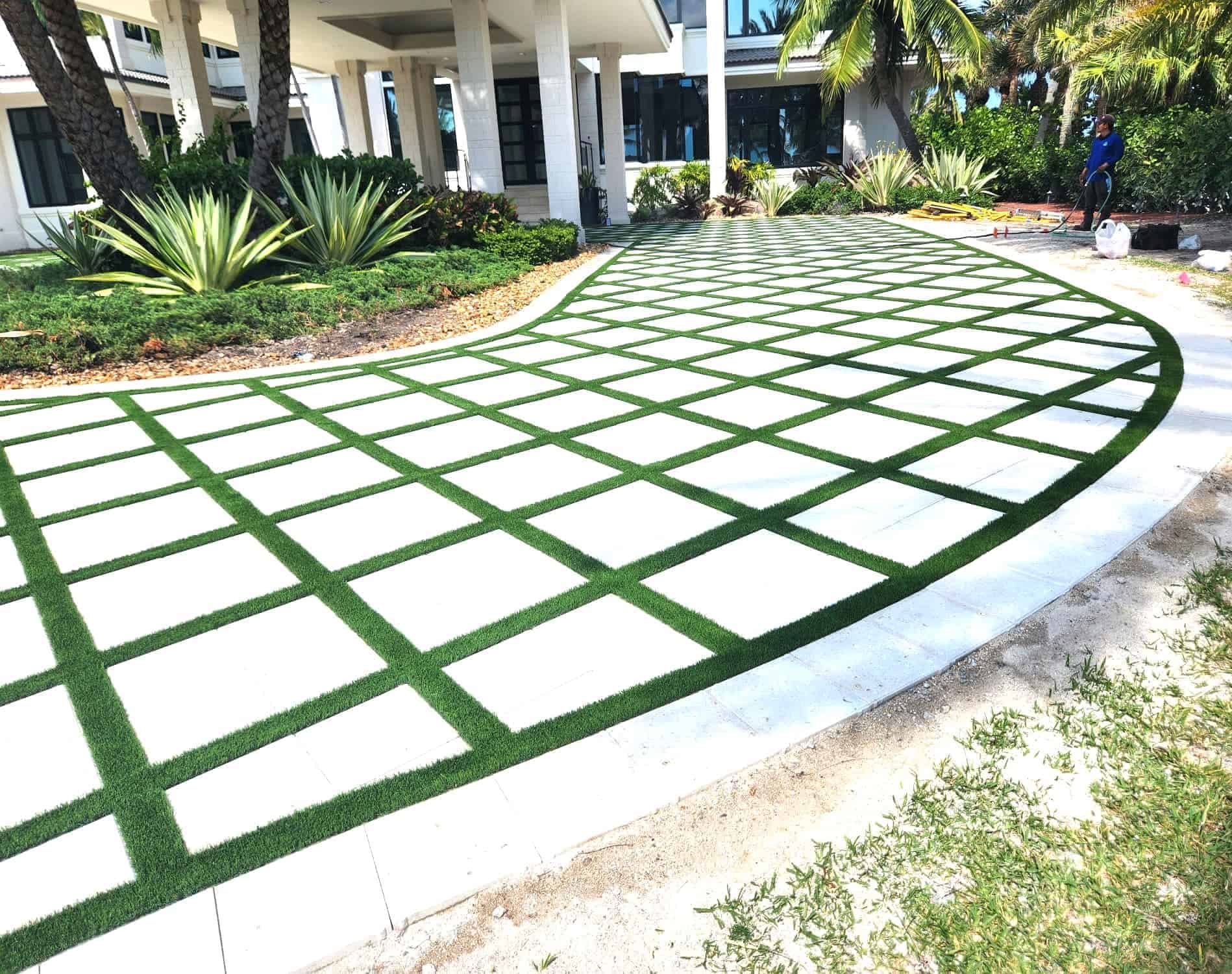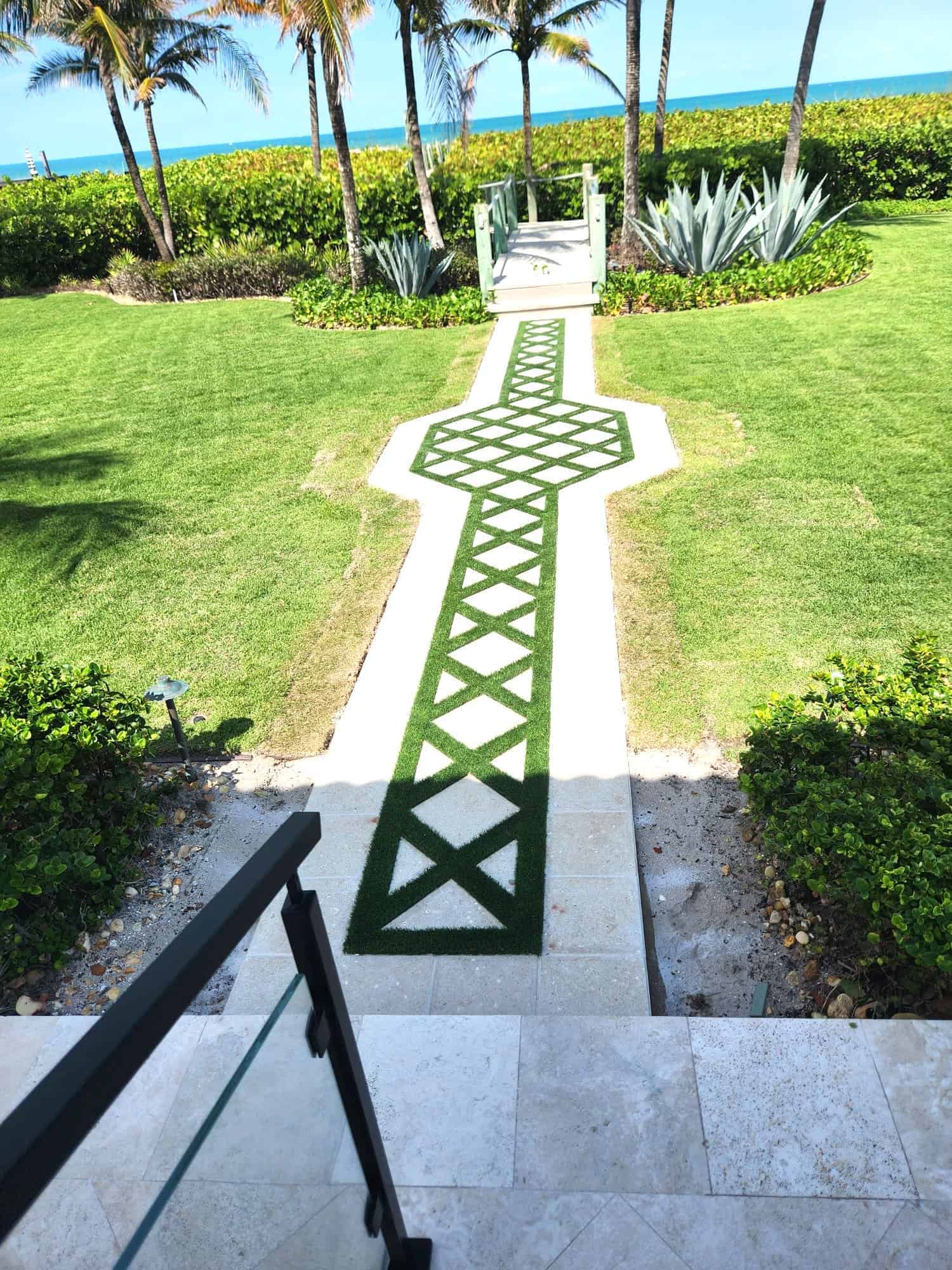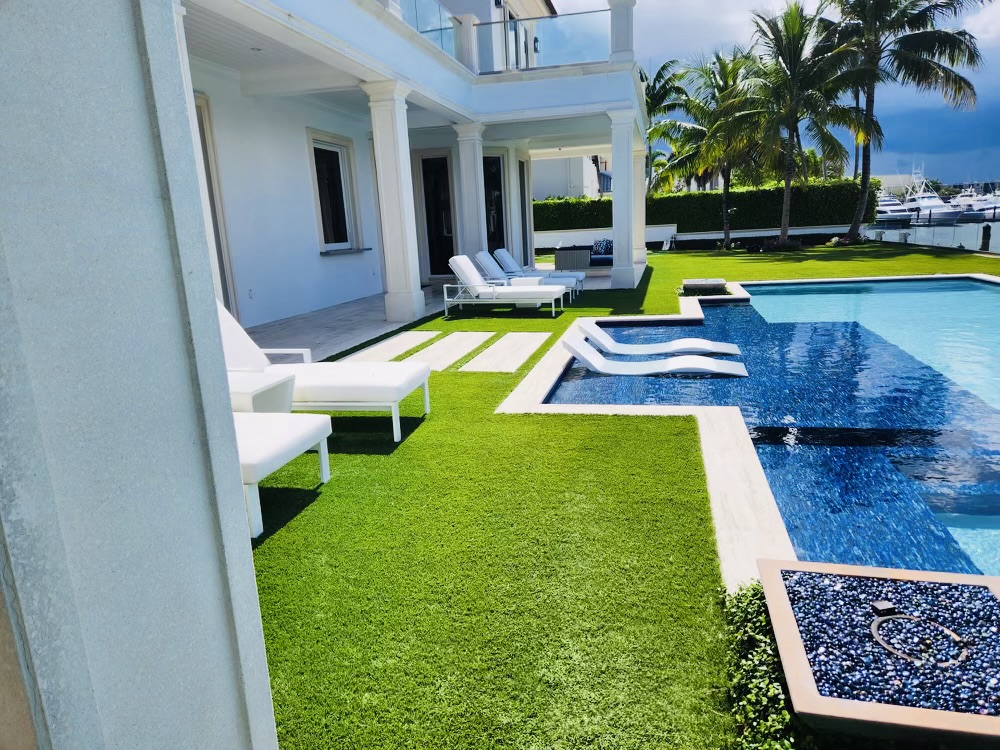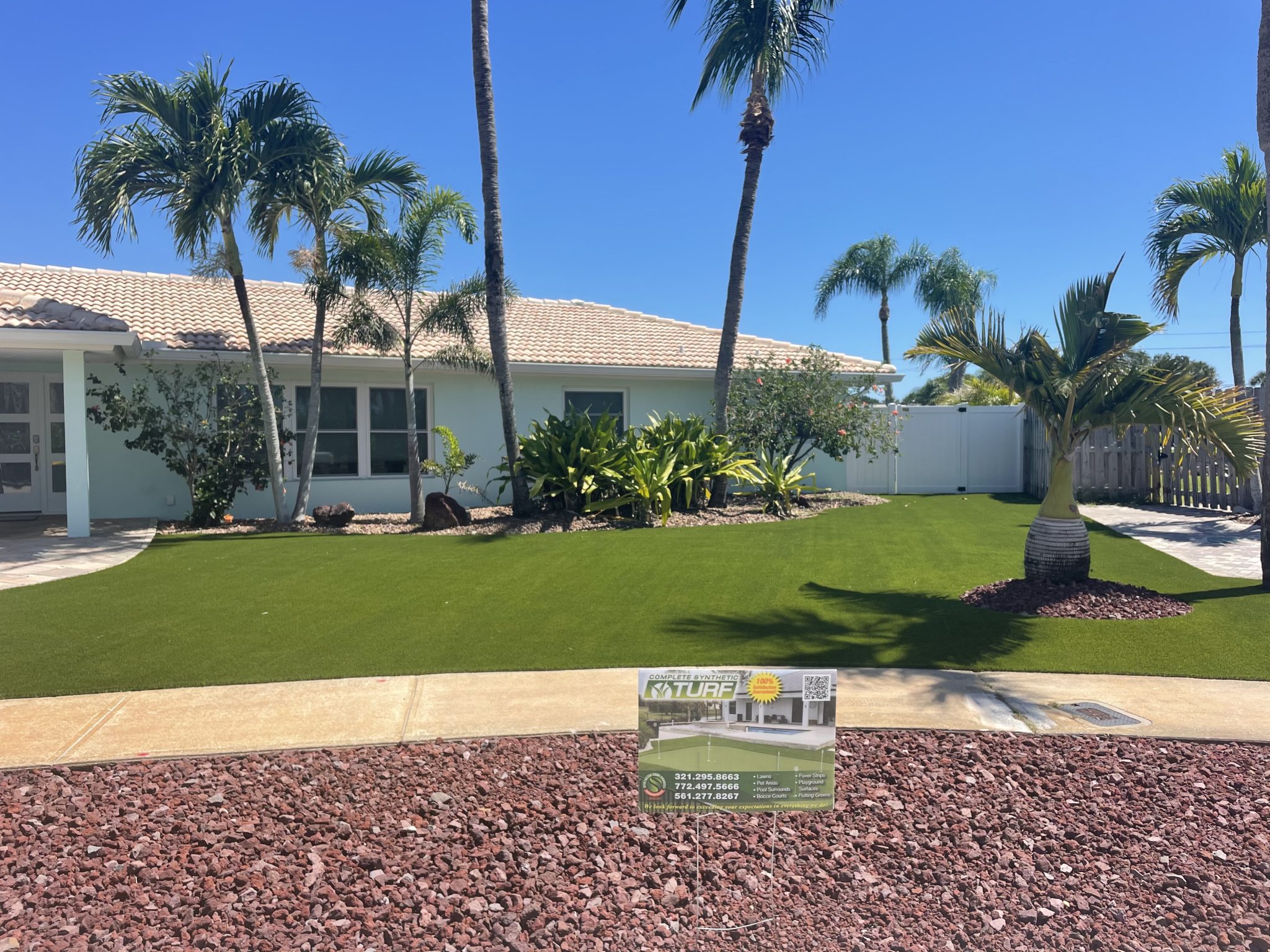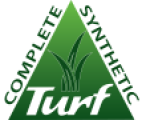 Pet owners know that the odor that accompanies dog urine can be an issue with almost all softscapes and hardscapes used in landscaping. Natural grass lawns, bare dirt, concrete patios, paving stone walkways and artificial grass can all acquire an unpleasant aroma if they are regularly used as a restroom area by pets. To compound the problem dogs are inclined to use the same spot repeatedly, which builds up over time, resulting in a stinky outdoor area. That unpleasant stench will linger long after the liquid has been absorbed into the surface. Dog pee is a special, smelly cocktail composed of hormones, bacteria, uric acid, and ammonia. The ammonia smell becomes more concentrated over time as different bacteria work on the waste product, converting the components to mercaptan, also known as methanethiol, a pungent gas that gives both ammonia and dog pee their distinctive odors.
Pet owners know that the odor that accompanies dog urine can be an issue with almost all softscapes and hardscapes used in landscaping. Natural grass lawns, bare dirt, concrete patios, paving stone walkways and artificial grass can all acquire an unpleasant aroma if they are regularly used as a restroom area by pets. To compound the problem dogs are inclined to use the same spot repeatedly, which builds up over time, resulting in a stinky outdoor area. That unpleasant stench will linger long after the liquid has been absorbed into the surface. Dog pee is a special, smelly cocktail composed of hormones, bacteria, uric acid, and ammonia. The ammonia smell becomes more concentrated over time as different bacteria work on the waste product, converting the components to mercaptan, also known as methanethiol, a pungent gas that gives both ammonia and dog pee their distinctive odors.
One way you can limit the buildup of the strong smell of pet waste is to ensure that your dog’s favorite pet relief areas have good drainage. This requires proper grading and base compaction and composition regardless of the surface material. Artificial grass usually has better drainage than natural grass, so opting for synthetic turf can help ensure better drainage for pet restroom areas.
There are many Artificial Grass Products and Specialized Turf Infill Products that claim to reduce the spread of bacteria and in doing so reduce the odors associated with animal waste deposits. Yes, the antimicrobials do assist, but they do not last forever and are only good on the surface. When a 50-pound dog deposits 3/4 of a pint of urine in a concentrated stream on a one-foot square of turf the urine is not in contact with the infill or yarn long enough to have a large impact. The infill and yarn with the antimicrobials will keep the bacteria that interact with the excrements off the surface so when the waste products hit the surface there are no bacteria present to start the interaction. But, as soon as the excrements go through the turf into the base “Hello Bacteria, Good by Protection”. With the wrong base construction and composition providing low rates of percolation, the stench will be overpowering. In addition, using specialized infills with antibacterial will add a lot of dollars to your Fake Grass Installation but afford limited additional protection. A bag of antibacterial infill will cost 300% to 400% more than the standard dust free sterile silica sand infill and the installation should require 50% more infill to provide the greatest protection.
The composition of Artificial Turf is free from bacterial or microorganisms, i.e. it is sterile. As such it cannot support the spread of bacteria, or mold or mildew by itself. If nutrients are introduced to the surface, such as a dropped ice cream cone, the bacterial or fungal spread is limited to the area of the contamination. The standard infill for Synthetic Turf is a dust free, sterile silica sand with a high mohs rating (Hardness). The sand is an inert material that is neither chemically or biologically reactive, is denser than water and will not decompose. Neither the turf components or the standard silica infill will support the spread of mold or mildew or bacteria. In the case of pets, the action of bacteria on urine or feces generates the pet odor none of us appreciate in our backyard. Feces, poop, should be cleaned up as soon as it is deposited on the synthetic turf surface otherwise it will be washed through the turf by rain or irrigation, or it will decompose and slowly move down through the turf. Urine on the other hand will pass through the synthetic surface quickly. In both cases the poop or urine with all their nutrients that are acted on by bacteria will reach the other side of the turf rapidly, away from the specialized infill and antimicrobial turf surface. To avoid odors those waste products with their nutrients must be moved further from the turf backing down toward the substrate. This is done with the proper combination of base materials at a greater deep then used for a standard lawn installation. Odors are not allowed to build up near the surface but are easily flushed further below the surface.
Artificial Grass is an excellent surfacing material for pet areas when it is properly installed with the correct base construction and composition. Your pet will be using your Artificial Lawn as a restroom so the flow of waste through the surface and down into the substrate is very important. Avoid installing weed barrier fabric beneath your Synthetic Lawn. The extra fabric can create a problem by adsorbing the urine into the fabric and restricting flow, Turf deodorizes are often installed as well, however, these tend to be in the odor masking camp as opposed to the odor removal camp. Meaning, they really don’t work all that well.
Give your favorite pup a safe and clean area to play and enjoy the outdoors without the strong stench of waste. Give your pets a properly installed Artificial Turf Surface that will last for years without mowing or fertilizing. Give them Complete Synthetic Turf.


